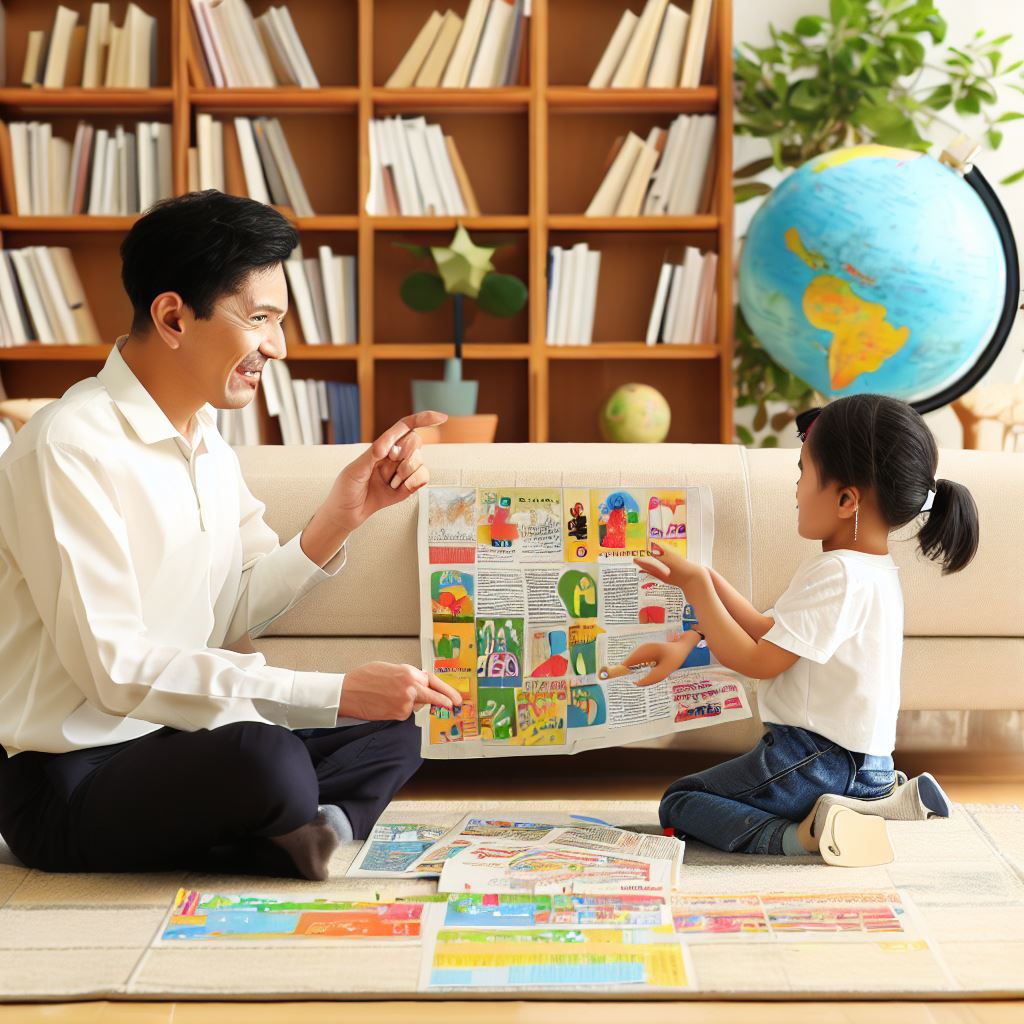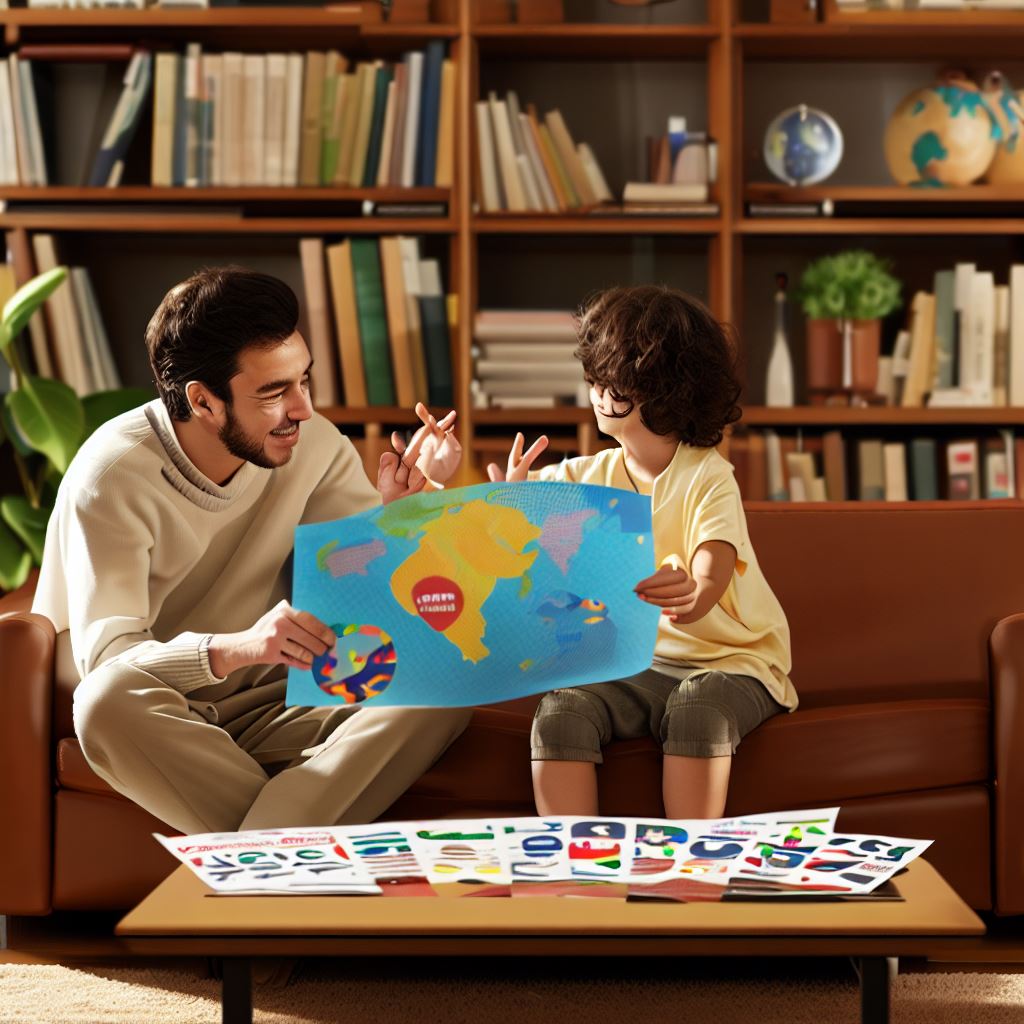
Discussing Current Events: A Guide for Parents
Understanding the Landscape of Current Affairs
In today's digitized age, world updates and the latest happenings are just a click away. With such easy access to information, children are exposed to a multitude of news, some of which might not always be child-friendly. As parents, educators, or influencers, we must recognize the importance of discussing these current affairs with our young ones.
"It's not just about telling kids what's happening in the world, but also helping them understand it." - Dr. Jane Goodall, Primatologist and UN Messenger of Peace.
The Imperative of Talking About World Updates
- Fostering Awareness: An informed child is a prepared child. Discussing news helps them understand their surroundings better.
- Developing Critical Thinking: When children are encouraged to question and reflect, they become analytical and critical thinkers.
- Building Empathy: Knowledge about different cultures, problems, and events helps foster empathy and compassion.
Importance of Discussing Current Events with Children
Children aren't just miniature adults; they're budding personalities with their own perspectives. Introducing them to current events:
- Shapes their worldview
- Develops their emotional intelligence
- Prepares them for future challenges
Age-Appropriate News Breakdown
While it's essential to keep our children informed, it's equally vital to ensure that news is presented in an age-appropriate manner.
For Ages 4-7:
- Use simple language and broad strokes. Avoid intricate details.
- Incorporate visual aids like cartoons or picture books.
For Ages 8-11:
- Begin to introduce more complex topics, but keep the conversation open-ended.
- Use real-life examples they can relate to.
For Ages 12-15:
- Discuss more in-depth issues and encourage them to share their opinions.
- Introduce them to varied news sources to foster critical thinking.

Navigating Sensitive Topics
Discussing sensitive or negative news can be challenging. Parents often fear inducing anxiety or distress. Here are some tips:
- Pre-Filter Information: Preview news sources to ensure they're suitable for children.
- Be Honest, But Gentle: Use a compassionate tone. If you don't know an answer, it's okay to admit it.
- Encourage Expression: Allow your child to express their feelings, fears, or anxieties.
Fostering Critical Thinking
It's not just about what the news is, but also about teaching them how to think about the news:
- Encourage them to ask questions.
- Discuss the difference between opinions and facts.
- Use real-world examples to challenge their thinking.
For instance, if a news piece talks about deforestation, ask them how it might impact animals, humans, and the environment. Encourage them to think about solutions.
Reaping the Benefits
Explaining current events to kids and engaging in informative talks comes with numerous advantages:
- Aware Citizens: Knowledgeable about their surroundings and world events.
- Empathy Development: Understanding of various perspectives and cultures.
- Informed Decision Makers: Ability to analyze, think critically, and make informed decisions.
Addressing Negative News
While it's essential to inform, we must avoid inducing undue fear and anxiety. Always:
- Ensure a safe environment to discuss distressing topics.
- Reiterate the positive aspects or silver linings.
- Emphasize actionable steps they can take, fostering a sense of control.
In Conclusion
Discussing current events with children might seem daunting, but with the right approach, it can be an enriching experience for both the parent and the child.
"The goal is not to scare them, but to prepare them. Not to shield them, but to enlighten them." - Dr. John H. Watson, Child Psychologist.
By embracing this challenge, parents are not only keeping their children informed but also shaping them into empathetic, critical thinkers ready to face the world. Remember, it's a journey - one best taken together.

Story: The World Map on the Kitchen TableEmily, a vibrant 7-year-old, had just returned from school, her backpack bouncing with every enthusiastic step. As she swung open the front door, the scent of freshly baked cookies wafted towards her, but what caught her attention was the large, colorful world map spread out on the kitchen table. Her mother, Lisa, sat there, a newspaper in one hand and a steaming mug of tea in the other. "Hey, Em! Thought we could have a little world tour while munching on these cookies," Lisa said with a wink. Emily climbed onto the chair, her eyes wide with wonder. "What's all this, Mom?" she asked, tracing her finger along the vivid lines of continents and oceans. Lisa pointed to a small tree icon on the map. "Remember how you were upset about the trees being cut down in that book you read? Well, that's called 'deforestation', and it's happening here," she explained, pointing to the Amazon rainforest. The next hour was a whirlwind of stories, questions, and answers. Lisa and Emily discussed peace treaties, represented by a handshake icon in one region, and dove into the importance of understanding different cultures. For every somber story, Lisa made sure to highlight the silver linings and the heroes working to make things better. When they reached a topic about a recent flood, Emily's brow furrowed with worry. Sensing her distress, Lisa pulled her into a gentle hug. "The world has challenges, sweetie. But talking about them, understanding them, is how we become part of the solution." Emily, holding her toy globe tighter, nodded. "So, by understanding the world, I can help it too?" Lisa smiled, "Absolutely. One conversation at a time." That evening, the kitchen was filled with more than just the aroma of cookies. It was brimming with curiosity, understanding, and hope. The large world map on the table was not just a piece of paper; it was a gateway to understanding the vast world outside, one story at a time. |





